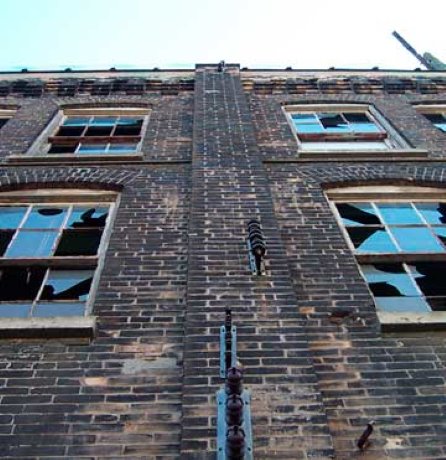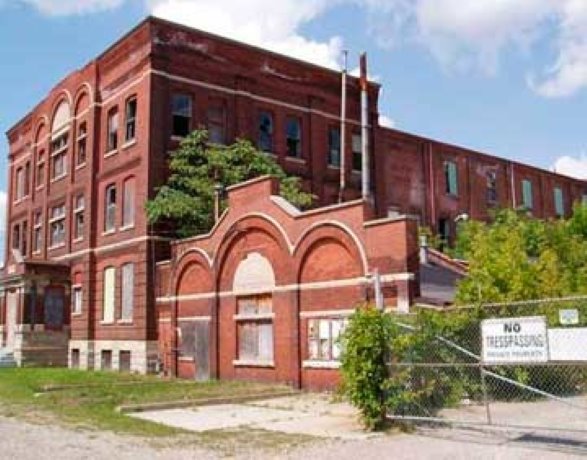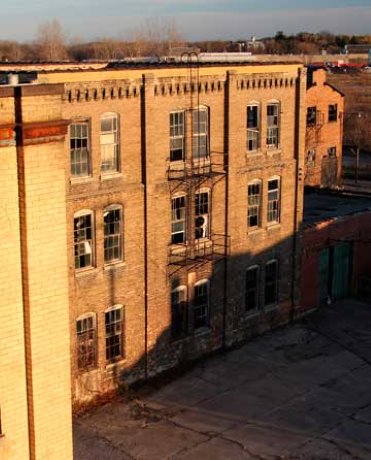A Greenwich-Mohawk remediation project in Brantford, Ontario has had an especially rough go, losing its developer, facing Aboriginal land claims and struggling with financial pressures.
Brownfields projects never move swiftly. But the Greenwich-Mohawk remediation project in the city of Brantford, in the hopper for more than a decade, has had an especially rough go, losing its developer, facing Aboriginal land claims and struggling with financial pressures.
The 52-acre site in the city’s southeast corner consists of three properties, giving it three civic addresses — 22 Mohawk St., 66 Mohawk St. and 347 Greenwich St.
Bisected by a rail line, the properties housed Massey-Harris, Massey-Ferguson, Cockshutt Plow and Adams Wagon factories when Canada’s farm manufacturing industry was in its heyday in the first half of the last century.
However, this seems like ancient history. All buildings are abandoned, except one now home to the Canadian Military Heritage Museum.
By 1999, several local properties, including the Greenwich-Mohawk lands, were identified as needing to be addressed. The city commissioned a remediation study in 2002 to examine opportunities and constraint; local politicians approved the study results two years later.
The city eventually acquired the three properties and removed barriers to development by eliminating existing liens and tax arrears, demolishing some unsafe buildings, and clearing out debris, combustible materials and underground storage tanks. The city conducted environmental and structural investigations. Its 2007 official plan changed the land designation from general industrial to one allowing mixed residential, commercial, open space and cultural uses.
The Ontario Ministry of Municipal Affairs and Housing approved the official plan in 2008, and the city found a potential partner, Terrasan Corp. to clean up and redevelop.
The city had already worked out a community improvement plan and tax incentive program to promote brownfields redevelopment, and had commitments of $12 million from the federal government and $5 million from the province for project work, plus a small grant from the Federation of Canadian Municipalities’ Green Municipal Fund for a site delineation study.
But the process, already slow, began to unravel. First, a portion of the official plan amendment was appealed to the Ontario Municipal Board, though the OMB ruled in the city’s favour.
Then, in 2010, with plans for mixed-used development, park space and waterfront improvements along the Grand River, the city was ready to clean up the site when three companies affiliated with Terrasan, including its clean-up division, filed for bankruptcy. Concerned about potential risks, the city terminated negotiations.
Still, there’s light on the horizon. The local councillor, Marguerite Ceschi-Smith, has taken the project under her wing and says the city has gone back to the drawing board and is proceeding on its own.
“That’s not to say that there won’t be a big plan again, but right now we’re holding back on any big mega-development like we were going to have,” Ceschi-Smith says. “The liability was too much, the dollars were too much, so now were just going to do it piece by piece.”
The city is issuing requests for proposals and is planning further site delineations and structural analyses of existing buildings, one of which is designated heritage, to review their condition.
“Then, we’ll clean up what we can with the money we have left,” Ceschi-Smith says, adding that the city might possibly consider partnering with a new developer should one come along.
Costs are almost always an impediment for brownfields development, and the problem is compounded in that Brantford is a small city, population 93,000, and on the periphery of the Greater Toronto Area.
Clean-up costs would also likely exceed the property’s land-for-land resale value, Ceschi-Smith says.
“It’s really not a good business proposition in the short term. But in the longer term, 20-30 years, it’s probably not a bad investment.”
There’s also the not-so-small matter of land claims, stemming back to the Haldimand Treaty of 1784.
“As a community, we’re working hard on our relationship with our First Nations neighbours,” Ceschi-Smith says, adding she’s hopeful clean-up will proceed soon enough.
“We’re looking to reintegrate this land back into the fabric of our community. For more than 40 years that neighbourhood has been a blight. It’s time to reclaim it and redevelop it. The community deserves better.”

1/2
Greenwich-Mohawk remediation project

2/2
Greenwich-Mohawk remediation project



Recent Comments
comments for this post are closed